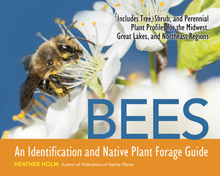A cold grey windy day, marking almost the end of seed-gathering season. I pop out hastily to get the seed of the Wild Petunia
(Ruellia humilis), which was resolutely unripe a few days ago but has now turned brown and is ready to split open. I’ve been watching the Sky Blue Aster (
Symphyotrichum oolentangiense) which had closed damp flowerheads when last visited but now quite a few have opened into a small dandelion-like globes, waiting to be blown off by a puff of wind, or pinched off by me.
The Black Cohosh (
Actaea racemosa) which had its glorious flowering in September and October now has serried ranks of little seed capsules hanging from its arched stems. They’re still green, I’ll leave them a while longer.
The seed-gathering season is a long one. For me, it starts at the end of June when I collect the drying fruit of the Red Elderberry (
Sambucus pubens). I’m not sure whether I should have propagated them immediately. The instructions from Henry Kock indicate that I probably should have: he prescribes 60 days of warm stratification followed by a cold period of 120 days to break dormancy.
Kock is the author of
Growing Trees from Seed – a practical guide to growing native trees, vines and shrubs, a bible in the horticultural world. Before his premature death in 2005 at the age of 53, Kock was hugely influential as an interpretive horticulturalist for over two decades at the Guelph Arboretum, where he founded the Elm Recovery Project. (I am proud to say that I received one of those elms from the late Keith Squires, nurseryman extraordinaire, and some 20 years on, it is in full growth.)
Read more




